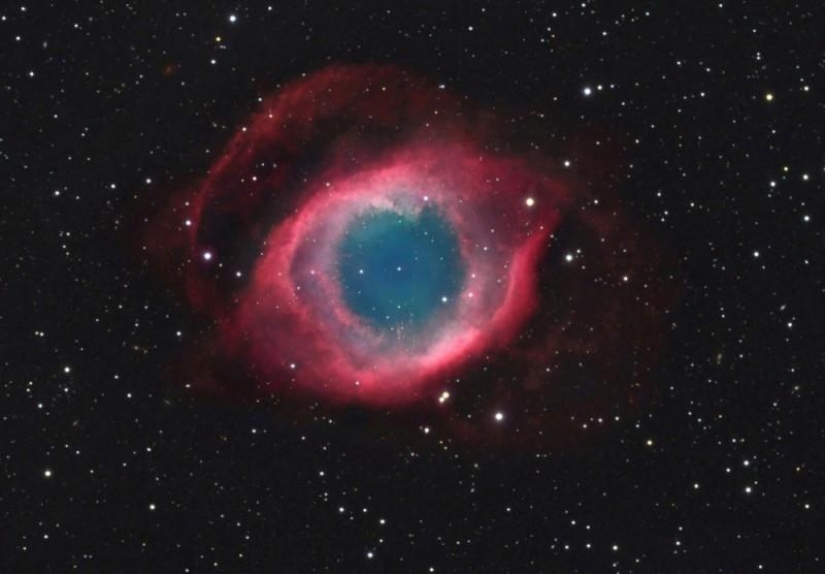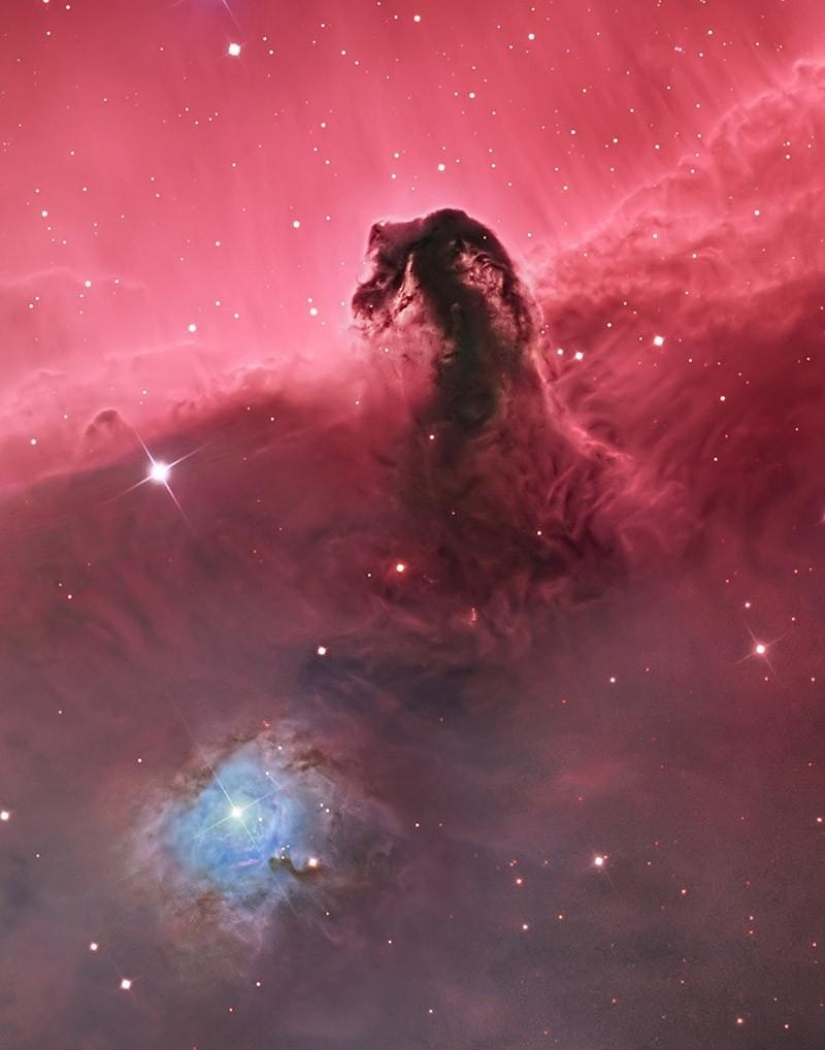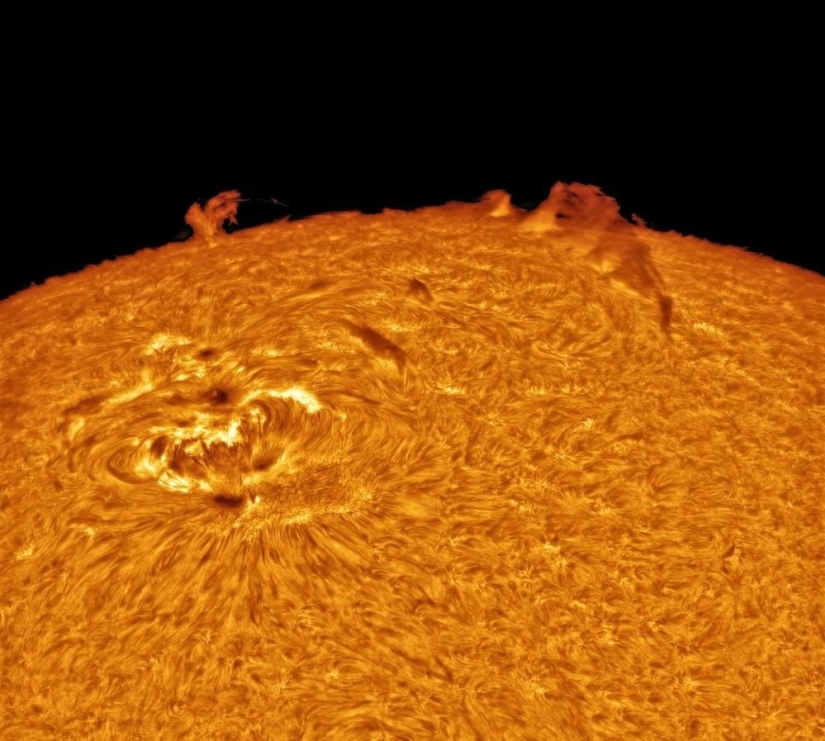The best photos of our Universe according to the Greenwich observatory
Categories: Space
By Pictolic https://pictolic.com/article/the-best-photos-of-our-universe-according-to-the-greenwich-observatory.htmlEvery year, the UK's main astronomical organization holds a competition among amateurs to take pictures of the Galaxy and the night sky and selects the best shots. Experts evaluate not only the overall composition of the photo, but also the ability to capture details in outer space. The winner of the competition receives a grand prize of £1,500, while category winners receive £500 each.


The northern lights over Iceland and their reflection in the glacier of the Vatnajokull nature reserve. Winner of the year in the Earth and Space category.

"Stars over wind turbines" image, Bangendore, Australia. Second place in the nomination "Earth and space".

The Lost Souls photo was taken on Lake Eyre in South Australia. The planets Venus, Jupiter and Mercury and the light of the Milky Way are reflected in the water. Second place in the category "People and Space".

Image of the Horsehead Nebula (IC 434). Won first place in the Deep Space category.

"Silhouettes against the background of the rising moon." The picture was taken on the observation deck of Mount Wellington in Tasmania on a full moon. The height of the mountain is 1271 meters above sea level. Winner of the year in the nomination "People and space".

The moon eclipsed Venus. Pictures were taken at intervals of 10 minutes. The photographer has been waiting for this event since 1989, when there was the last eclipse of Venus. Jury recommendation in the Earth and Space category.

The figure of a man against the background of the Kenyan savannah and a rarely observed "hybrid" solar eclipse. Winner of the year in the category "People and space".

The Perseid meteor shower, which appears annually in August from the direction of the constellation Perseus. Jury recommendation.

"Guiding Light to the Stars" The photo shows the Milky Way, taken on the North Island (New Zealand). On the left is a pair of Magellanic Clouds, satellite galaxies of the Milky Way. Winner of the year in the nomination "Earth and space".

Photograph of the Helix Nebula. Second place in the Deep Space category.

"Frozen Waterfall and Stars" - the winner in the "Earth and Space" nomination.

Milky Way and thousands of stars. Winner of the year in the nomination "People and space".

Photo "Hunting the Moon". Second place in the nomination "People and Space".

One of the brightest areas in the constellation Cygnus. Jury recommendation in the Deep Space category.

An image of hot plasma on the boiling surface of the Sun. Winner of the year in the Our Solar System category.

Lunar craters. Runner-up in the Our Solar System category.

Sun shot through Calcium-K filter. Jury recommendation in the Our Solar System category.

Photo "Shining pine". In the White Mountains of California, an ancient spiny intermountain pine spread its branches against the backdrop of the Milky Way. Winner in the Earth and Space category.

A snapshot of the consequences of the explosion and death of a star many times larger than the Sun in mass and size, which occurred 10,000 years ago. Winner in the Deep Space category.

"Venus and Jupiter in close union" - the winner in the nomination "Space and people".

The top prize for images from automated telescopes was awarded to British photographer Mark Hanson for his series of images of a spiral galaxy. Winner in the "Robotic Scope" nomination.

Colorful clouds near Rho, a double star in the constellation Ophiuchus. The red supergiant Antares, one of the brightest stars in the night sky, illuminates the yellow-red clouds in the upper left corner of the image. Rho Ophiuchi is at the center of the blue nebula on the right. The distant globular cluster M4 is visible just below Antares. Second place in the Deep Space category.

A shot of rock formations in New Zealand with the Milky Way in the background. For him, Chris Murphy was awarded the Patrick Moore Prize in the Young Photographer category.

15-year-old twins Shishir and Shashank Dholakia from the USA photographed the Horsehead Nebula (IC 434). And they became winners in the Young Astronomer Photographer category.
Keywords: Universe | Sky | Observatory
Post News ArticleRecent articles

In Ancient Egypt, gods were revered, pharaohs were glorified, and majestic tombs were built. The builders of royal tombs were ...

Whether you are a tourist or a professional photographer, in both cases Lapland is a truly magical place. There is not only a very ...
Related articles

Clouds, white-maned horses. And if you look closely and add a little imagination, you can see in this "heavenly cotton wool" not ...

We also call them shooting stars, stellar or meteor showers, and meteor showers. But in fact, a starfall is still a meteor shower, ...

Australian photographer Lincoln Harrison captured the movement of the stars in the night sky, using a long shutter speed (up to 15 ...

Why should a coffin be a boring box if it can be ordered in the form of a lobster, fruit, bird or shoe? Residents of the African ...